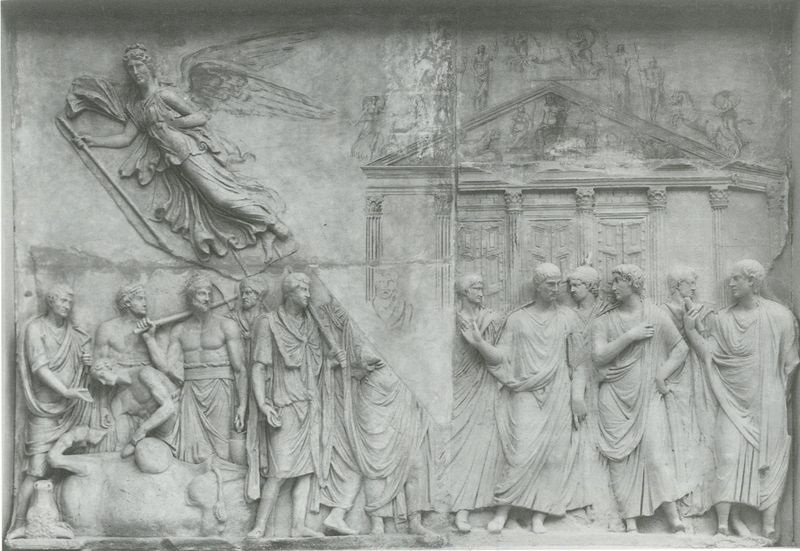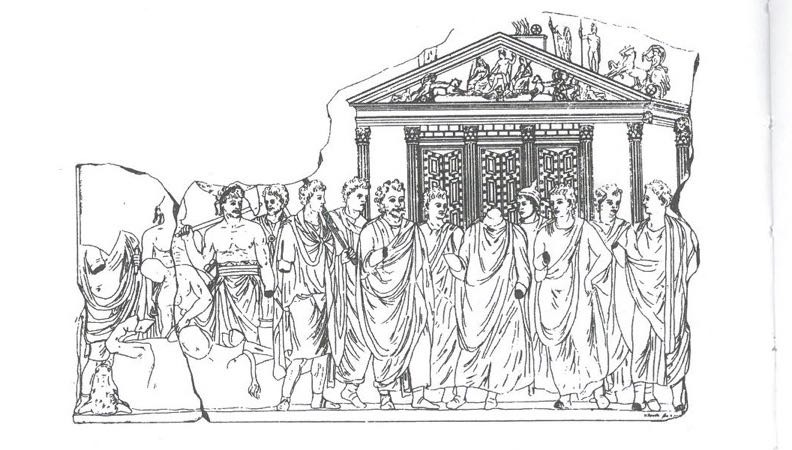Cultural Significance

Relief depicting sacrifice in front of the Temple of Jupiter Capitolinus in Rome.
Fototeca Unione, American Academy in Rome.
(This relief was not on the Temple of Jupiter Optimus Maximus).

Temple of Jupiter Optimus Maximus Capitolinus. Marble relief (from the Basilica Ulpia) showing a sacrifice in front of the temple.
The Temple of Jupiter Optimus Maximus was a political, religious, and civic center of Rome throughout the Republic and Empire, despite its multiple destructions and reconstructions.1 The first annual meetings of the Senate occurred at the Temple, and incoming magistrates made sacrifices to Jupiter at the Temple before entering office.2 Triumphal processions of successful military generals returning from campaign concluded here with rituals and sacrifices to Jupiter.3 Acts of state were announced at the Temple, and it was an important repository of records.4 Importantly, it housed the Sibylline Oracles, a collection of texts from oracles with predictions about the history of Rome.5
1 Amanda Claridge, Rome: An Oxford Archaeological Guide (Oxford: Oxford University Press, 2010), 268.
2 Amanda Claridge, Rome: An Oxford Archaeological Guide (Oxford: Oxford University Press, 2010), 268.
3 John W. Stamper, The Architecture of Roman Temples (Cambridge: Cambridge University Press, 2005), 14.
4 John W. Stamper, The Architecture of Roman Temples (Cambridge: Cambridge University Press, 2005), 14.
5 John W. Stamper, The Architecture of Roman Temples (Cambridge: Cambridge University Press, 2005), 14.